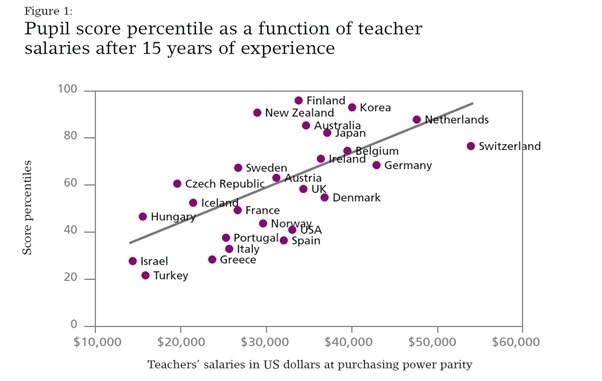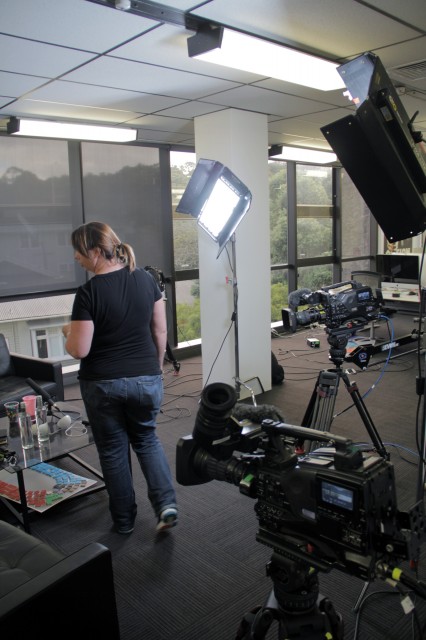Fact: New Zealand’s education system is the envy of much of the world.
This is a matter of pride for many of us, I’m sure, but it simply does not suit the National government’s “private is best and nothing the government does is ever any good” ideology, so let’s do all we can to break it, how about that for an idea?
According to this article ‘Class size life could help education’ (NZ Herald) the latest claim out of Treasury is that if we increase class sizes by “about 3” students, we’ll be able to have less teachers overall, so we can pay the ones we still have more, so we’ll then (somehow) have more gifted and master teachers, and that will somehow make things better.
I think it goes something like this:
- Increase class sizes
- Fire a bunch of teachers
- ???
- Profit!
Step 3 is left to sort itself out, but we’ll probably hear the phrase Public Private Partnership at some point. Don’t you know that private business never do anything stupid or wrong, never mind that about 80% fail in their first year. Because privately run businesses are SO EFFICIENT, and the public sector is mumble-mumble-let’s-sell-it-all-off.
Something along those lines. (We’ve heard this all before.)
Treasury say that “master teachers”, through their skill at the job, teach so well that educational outcomes for students turn out to be about the same as students who were in smaller classes.
Their number is that it’s the equivalent of about a 10 pupil reduction.
I wouldn’t be at all surprised if this were true. Gifted teachers are inspiring. I think we’ve probably all had one (or if we’re extraordinarily lucky, 2) at some point. They make you strive, they show you the way forward, and they help you figure out how to get there.
But here’s the thing, maybe 1% of teachers is really gifted. You can’t send a normal teacher on a week long training course and turn them into a gifted teacher.
So we’d still only have about 1% of these amazingly high performing teachers. But the class sizes for all teachers across the board, including the very large majority who are merely good, and the few who are (frankly) bad, would also increase.
In other words, we’d have worsened the likely educational outcomes for 99% of pupils.
Exactly who do they expect to buy the rubbish they’re trying to sell us?
I’ll give you three guesses which kinds of schools will remain entirely unaffected by these changes, and continue to have wonderful educational outcomes for their (mainly white, mainly rich) pupils. Some valid answers will rhyme with words like “Drammer Bone”, or “Brivate Stools”.
There is literally no education system in the entire world where teachers are paid so little, yet perform at such a high standard that their students come out topping the global educational outcome rankings.
Don’t understand how good our system is? Check out this revealing chart (as seen on DimPost):
New Zealand’s education system is a top performer, and by comparison with other countries that perform anywhere near our standard is headshakingly underfunded.
So I have a different suggestion than Treasury:
Don’t mess with a good thing, don’t try to fix something that already works, and just as an aside, maybe leave the design and future of our education system to education experts, not bean counters.
One very important note, as good as I believe our education system to be in the main, it’s clear that many Maori & Pacific Island students, and students in lower socio-economic groups generally, have much worse educational outcomes than desired.
Our system is not perfect, I’m sure it’s possible to make changes that will make the results for our people even better. But the idea that increasing class sizes is the way ahead is completely boggling.
But if any improvements are identified, it’s the teachers who are the ones who are qualified to tell us what they are. Then Treasury can do the vital job of helping find the money to pay for it.
But until that happens, they should stick to their actual job which is advising the Government on economic matters, not on education.
Updated to note that there is some discussion on YCombinator about limitations of the design of the study behind the Pupil score as a function of teacher salaries chart. I don’t believe those design limitations change its relevance in this context, just don’t read too much into the chart in terms of greater causation. Thanks to Keith Patton on Twitter for providing the YCombinator reference.






















